Contents
The unique medicinal qualities make the mysterious cat’s claw attractive for use in traditional medicine. Scientists paid attention to the plant only in the 70s of the 20th century and began to study the effect on the human body.
What is “cat’s claw”?
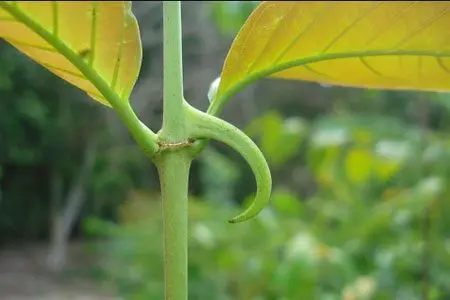
Cat claw (Latin name Uncaria tomentosa) is a plant of the Rubiaceae family, which is a tree-like liana. Distributed in the exotic forests of South and Central America, Guinea, Peru, as well as in Southeast Asia. The branches of the vine grow up to 30, sometimes up to 50 meters in length, the thickness varies from 15 to 20 cm in diameter. The viability of the vine is about three decades.
The Peruvian liana got the wonderful name “cat’s claw” due to the fact that the entire surface is covered with hooked spines, similar to the claws of a cat. With the help of these hooks, the liana tenaciously clings to trees growing nearby. The Indians of South America have revered the cat’s claw for thousands of years for its unique healing qualities. Believing in the power of nature, they believed that jaguars feed on the juice of the sacred plant. Animals receive strength, endurance and the ability to run fast from the vine. The bark, leaves, rhizome of the cat’s claw entered the folk Indian medicine. With its help, drugs were prepared to strengthen the immune system, treat intoxication with poisonous plants, and fight inflammatory diseases.
In the course of further research, it became clear that the resistance of the Indians to the formation of cancer cells is associated with the use of cat’s claw tea. Soon, the laboratories of Austria, Great Britain, Italy and Germany began to study the properties of the Peruvian liana. Several years of analyzes and clinical observations made it possible to establish the oncoprotective properties of this mysterious plant. Further study of the chemical composition of uncaria made it possible to determine many healing properties.
The chemical composition of the cat’s claw
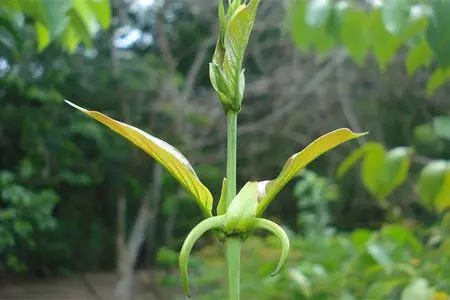
Mitrafillin – an organic alkaloid that kills the cells of sarcoma, breast cancer, prevents the development of cancer. Contained in old leaves.
Rynchophyllin – has an anticonvulsant effect, lowers blood pressure, relieves the feeling of numbness. Derived from the bark of a creeper.
Isopteropodin — antibacterial action on gram-positive microorganisms. The substance is isolated from the leaves.
Unkariny – alkaloid compounds obtained from the leaves of the plant. They have pronounced antitumor properties, are able to kill leukemia cells.
Hirsutin – a substance synthesized from the young leaves of the cat’s claw. The element is able to lower the tone of blood vessels, which leads to a decrease in blood pressure.
Uncarinic acid – synthesized from the bark in the form of triterpene, has an anti-tuberculosis effect, eliminates Koch’s sticks.
quinovine acid – allows you to reduce the heart rate. The substance is obtained from the bark of a plant in the form of an acidic triterpene compound.
Quinic acid – a powerful antioxidant that can stimulate the restoration of damaged sections of the DNA chain, protect neurons from the destructive influence of pathogenic factors.
Proanthocyanidins – flavonoids with antioxidant, anti-inflammatory, anti-cancer properties. Contained in almost all parts of the uncaria.
Quinic acid – contributes to the normalization of metabolism, has pronounced antioxidant properties, regulates blood glucose levels.
Isorynchophyllin – enhances the protective functions of the body, prevents the formation of blood clots.
In the bark of the cat’s claw, ursolic and oleanolic acids, phytosterols were found. Monounsaturated fatty acids, palmitoleic and cisvaccenic, are concentrated in the seed oil.
Health benefits of cat’s claw
Influence on immunity
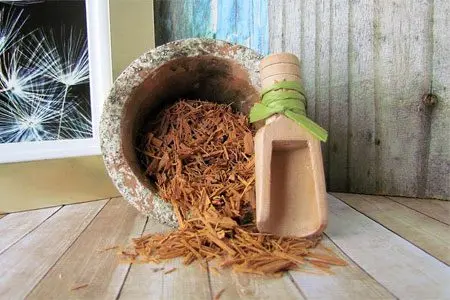
The active elements of the cat’s claw stimulate the protective functions of the body, help to cope with infectious diseases in a shorter time. Such conclusions appeared after two, independent from each other, studies. The first was attended by 27 men. For 2 months they took 700 mg of cat’s claw extract. During the second, four men received the same drug for 6 weeks. The results of both observations showed an increase in leukocytes, which indicates an increase in resistance to infections.
Scientists speculate that the immune boost may be due to the anti-inflammatory properties of cat’s claw. Unfortunately, the obtained data cannot answer all the questions, therefore, additional studies are required.
Action in osteoarthritis
Osteoarthritis is the most common joint disease in the United States. Patients complain of pain, difficulty in performing movements.
For the purpose of the experiment, 45 patients with osteoarthritis of the knee were offered 100 mg of cat’s claw extract per day. After four weeks of taking the drug, there was a decrease in pain during exercise. At rest, the pain symptoms did not change, and no changes were noticed in relation to swelling of the joints. There were no negative symptoms during the experiment.
Another study was conducted for two months. Patients consumed cat’s claw along with the Peruvian poppy root. The combined effect of medicinal supplements allowed to reduce pain, the joints became more mobile. During the entire experiment, patients were less likely to take painkillers.
In an experiment involving two groups of subjects, one was given 100 mg of cat root extract along with minerals, and the other was given a placebo. Two weeks later, participants in the first group noted a decrease in pain and improvement in joint function. It is important that the effect of taking the drug did not last more than eight weeks.
Mitigation of the symptoms of osteoarthritis is possible due to the properties of the cat’s claw to eliminate signs of inflammation. To study the properties of the Peruvian liana, it is necessary to conduct studies with the use of the drug in its pure form.
Action in rheumatoid arthritis

Rheumatoid arthritis is diagnosed in an increasing number of patients every year. In the US alone, it has been identified in 1,28 million adults. Rheumatoid arthritis is an autoimmune disease. One of the typical symptoms is pain and swelling of the joints, an increase in local temperature. Some rheumatologists believe that cat’s claw extract can alleviate or eliminate these symptoms. This assumption is based on the anti-inflammatory properties of the plant.
During a clinical experiment, 40 patients with rheumatoid arthritis took 60 mg of cat’s claw extract daily as part of complex therapy. Compared to participants in the control group, they experienced a 29% reduction in pain symptoms.
The obtained results allow us to hope for the creation of a new effective drug for the treatment of rheumatoid arthritis. This requires a more detailed study of the healing properties of the cat’s claw.
Unconfirmed properties of the cat root

Almost all the phytocomponents that make up the cat root have a beneficial effect on body functions and strengthen the immune system. It can be assumed that its use will significantly affect the improvement of health in the following conditions:
Malignant tumors.
Viral infections.
Increased anxiety.
Allergies of various etiologies.
Hypertonic disease.
Gout.
Diseases of the gastrointestinal tract.
Bronchial asthma.
Cystic changes in the ovaries.
AIDS.
Dosage Recommendations
Specific recommendations for taking cat’s claw have not yet been developed. Based on the scarce research data, the WHO indicates that on average, 20 to 350 mg per day of cat root is acceptable in the form of extracts, 300 to 500 mg for capsules. The entire daily dose should be divided into equal parts for 2-3 doses during the day. For experimental purposes, patients were offered 60 mg per day for rheumatoid arthritis, 100 mg for the treatment of knee osteoarthritis.
Side effects
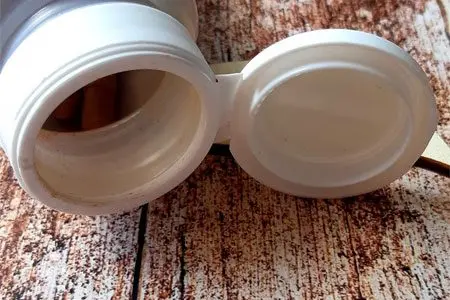
Cat’s claw is still an understudied plant. With regular use of the medicinal extract, negative symptoms, as a rule, are not observed. However, it should be remembered that exceeding the recommended doses can lead to a number of side effects:
Dyspeptic disorders.
Excessive drop in blood pressure.
Bradycardia.
Bleeding
Impaired renal function.
Neuritis.
When planning a pregnancy, you should refuse to take cat’s claw, due to its contraceptive properties, at least two months before the intended conception.
Противопоказания
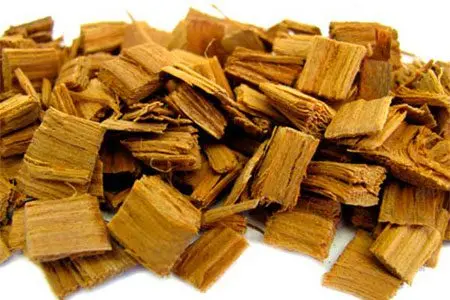
Pregnancy – the drug can provoke a miscarriage, adversely affect the fetus.
Lactation period.
Simultaneous use of blood-thinning drugs.
Violation of blood clotting processes.
Hypotension.
Stomach ulcer.
Intestinal diseases.
Concomitant use of immunosuppressants.
Preoperative and early postoperative periods (the first 10-14 days before and after the intervention).
Condition after organ transplantation – the drug can cause rejection of donor tissues.
Leukemia.
Tuberculosis.
Diseases of the liver, kidneys.
Cat’s claw is not recommended for patients suffering from type I diabetes, multiple sclerosis, systemic lupus erythematosus, Crohn’s disease due to insufficiently studied properties of the plant.
Reviews and recommendations of doctors

Patients taking cat’s claw extract note high immunostimulatory properties. Cat’s claw allows you to protect the body in the autumn-winter period, when the likelihood of ARVI and other colds increases.
Doctors recommend cat’s claw as part of the treatment to improve the body’s defenses. In some cases, cat’s claw extract is indicated during the recovery period after surgery, previous diseases. The complex of active elements and vitamins favorably affects the condition of patients after courses of radiation and chemotherapy.
Patient reviews and expert opinion define cat’s claw as a remedy with a unique combination of trace elements and vitamins, which has pronounced healing properties. Despite all the positive information, it should be remembered that the herbal supplement can only be used as part of complex therapy. Before starting the use of preparations based on cat’s claw extract, you should consult with your doctor and undergo the necessary laboratory tests.









